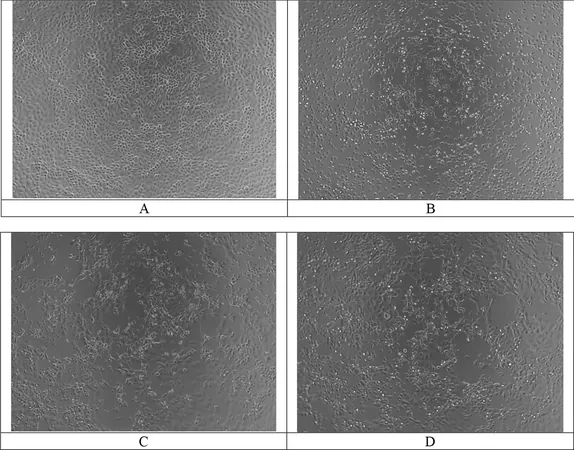
Breakthrough in Nasal Antiviral Treatments: The Power of Interferon Gel
2025-04-10
Author: Nur
Introducing a New Antiviral Approach
In a groundbreaking study, researchers have unveiled a fresh method for assessing the longevity of interferon α-2b (IFN) antiviral activity within the nasal cavity, paving the way for potentially revolutionary nasal treatments against viral infections.
Key Objectives of the Study
The primary aim was to create a reliable system to evaluate how long this antiviral agent remains effective when administered nasally, comparing the performance of a new gel formulation to a traditional spray.
Study Methods Explained
Using Wistar rats as subjects, researchers introduced both formulations into their nasal cavities. The team meticulously washed the nasal passages at intervals of one, three, and four hours post-administration to analyze the residual antiviral activity in the samples.
Exciting Results Unveiled
The results were illuminating: just one hour after administration, both the spray and gel methods exhibited similar antiviral potency. However, as time progressed, the gel formulation demonstrated a notable advantage. Four hours after administration, its antiviral activity was four times higher than that of the spray formulation.
Why Is This Significant?
This research is crucial in our ongoing battle against viruses, especially in light of recent pandemics. Interferons, a class of antiviral agents first identified in 1957, are vital in the fight against various infections, including COVID-19. Nasal administration can provide targeted local action, making the delivery method particularly promising.
The Science Behind It
The innovative gel formulation developed by JSC Farmak includes high-molecular compounds that allow it to transform from liquid to gel upon administration. This unique property helps to better adhere to nasal tissues, prolonging the drug's presence and effectiveness in the body.
Broader Implications for Antiviral Therapies
Nasal drug delivery is gaining momentum as a viable alternative for treating viral infections transmitted through airborne particles. This method enhances drug localization to the site of infection, potentially minimizing the side effects associated with systemic treatments.
Future Directions: What’s Next?
As research continues, further evaluations will be conducted to refine these formulations and their application. This groundbreaking study opens up exciting avenues for developing effective antiviral therapies that could make significant impacts in global health.
A Call for Continued Research
Given the promising results of this study, the potential for IFN nasal gel as a powerful antiviral agent is immense. Continued investigation into its efficacy and safety will be key in transforming how we tackle viral infections in the future.
The Path Forward in Viral Defense
With a focus on local action and sustained antiviral effects, the ongoing development of interferon formulations could very well be a pivotal strategy in the fight against emerging viral diseases.



 Brasil (PT)
Brasil (PT)
 Canada (EN)
Canada (EN)
 Chile (ES)
Chile (ES)
 Česko (CS)
Česko (CS)
 대한민국 (KO)
대한민국 (KO)
 España (ES)
España (ES)
 France (FR)
France (FR)
 Hong Kong (EN)
Hong Kong (EN)
 Italia (IT)
Italia (IT)
 日本 (JA)
日本 (JA)
 Magyarország (HU)
Magyarország (HU)
 Norge (NO)
Norge (NO)
 Polska (PL)
Polska (PL)
 Schweiz (DE)
Schweiz (DE)
 Singapore (EN)
Singapore (EN)
 Sverige (SV)
Sverige (SV)
 Suomi (FI)
Suomi (FI)
 Türkiye (TR)
Türkiye (TR)
 الإمارات العربية المتحدة (AR)
الإمارات العربية المتحدة (AR)